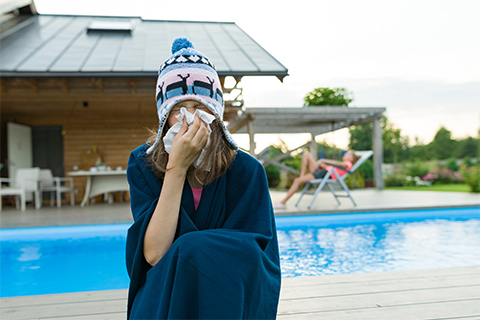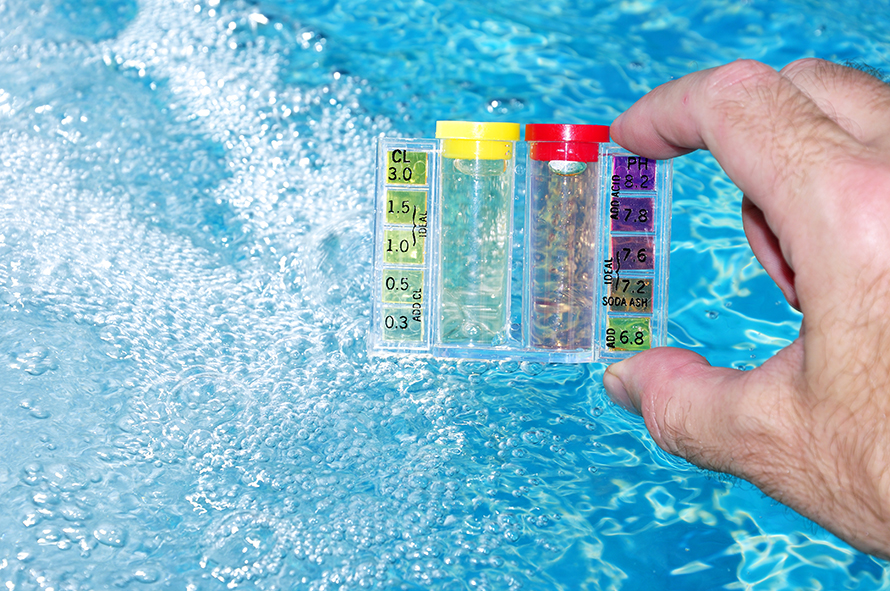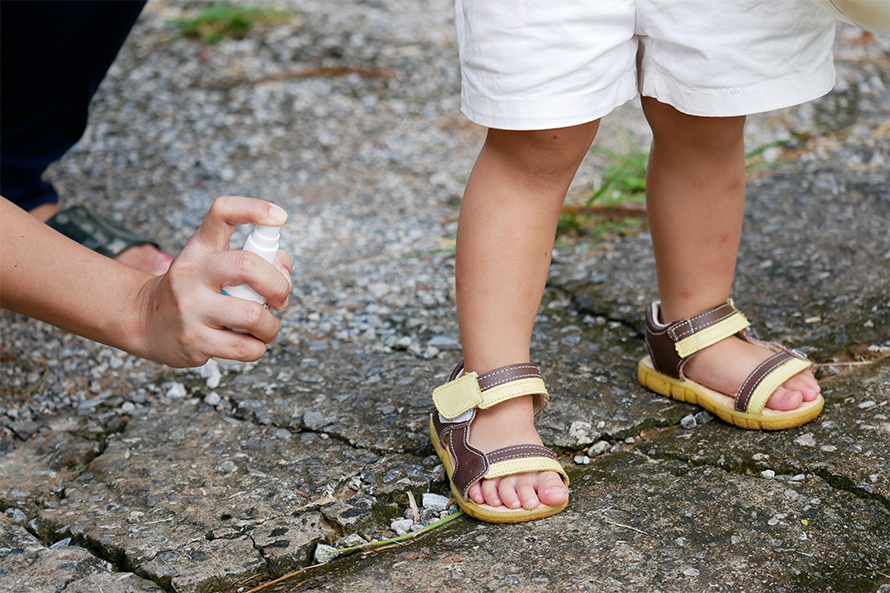Summertime can be germy
As flowers bloom and temperatures climb, many are eager to get back outside. But while the sun may be shining, there is a dark side that can make the great outdoors not so great.
Gangs of germs are lurking in the woods, in the soil, in the water and in your food, ready to rain on your summer parade.

I’m a professor of microbiology at the Indiana University School of Medicine, where I study and teach about infectious disease. Here are some things to keep in mind to help you and your loved ones stay free of illness while enjoying summer activities.
Germs in the backyard
There’s nothing like the smell of a good barbecue and fresh goodies from your own garden. To make sure people leave your party with only good memories, be aware of germs commonly linked to food poisoning, which can result in diarrhea, cramps, nausea, vomiting and fever.
Meats, including fish and poultry, often house harmful bacteria such as Salmonella, E. coli or Listeria. Raw meat can contaminate anything it touches, so be sure to wash your hands and disinfect surfaces and utensils. To avoid cross contamination, do not keep uncooked meat near prepared foods. Meat products must be cooked to proper temperatures to ensure harmful germs are destroyed before consuming.

In addition to bacteria, a parasite called Toxoplasma gondii can cause acute food poisoning. Toxoplasma parasites are shed as microscopic oocysts in the feces of infected cats. Oocysts persist in the environment for a year or more, and other animals, including people, can inadvertently ingest them.
Upon infection, Toxoplasma forms tissue cysts in the flesh of food animals – another reason to cook your meats thoroughly. Pregnant people need to take special care in avoiding Toxoplasma, since the parasite can cross the placenta and cause miscarriage or birth defects.
To avoid getting toxoplasmosis from oocysts, people should wear gloves while gardening, wash fruits and vegetables, and make sure the sandbox is free of cat poop and covered when not in use.
Germs in the water
Recreational water facilities, such as pools, water parks and fountains, are a great way to beat the summer heat. The smell of chlorine is a good sign that the water is being treated to kill many types of germs.
Unfortunately, some germs can remain infectious in chlorine for several minutes or days, which is plenty of time to spread from one person to another. These include viruses such as norovirus, bacteria such as E. coli, and parasites such as Cryptosporidium and Giardia.
Accidental ingestion of these germs can cause stomach problems, including diarrhea, which can become serious if it leads to dehydration. To avoid becoming infected, swim in well-maintained facilities and avoid swallowing the water. To avoid infecting others, stay out of public water for at least a week if you have diarrhea.

Bacteria in the water that get trapped in the ear can lead to a painful infection known as swimmer’s ear, which can be prevented by wearing earplugs in the water.
Ponds, rivers and lakes can also be home to these diarrhea-causing germs. Warm fresh water may also contain Naegleria fowleri, the so-called “brain-eating amoeba.” While extremely rare, inhaling water containing Naegleria fowleri is almost always fatal. Wearing nose plugs can help prevent infection.
If you’re going to reach for the beach, be sure to reach for waterproof bandages if you have an open wound, piercing or tattoo. Global warming has produced a rise in so-called “flesh-eating bacteria” that cause a dangerous condition called necrotizing fasciitis. These infections can be very difficult to treat and may result in surgical removal of affected tissue or limbs.
Shellfish such as oysters, clams and mussels filter ocean water as they eat, causing germs to get trapped inside their bodies. Consuming raw shellfish can lead to serious food poisoning due to infection with bacteria or Toxoplasma oocysts.
Germs on the trail
While hiking or camping, you may come across water that looks clean enough to drink, but don’t be tempted.
Be sure to boil or properly filter water you drink to avoid bacteria such as E. coli and parasites such as Giardia and Cryptosporidium. These intestinal pathogens will produce cramps, nausea and diarrhea – especially unpleasant symptoms when you don’t have access to indoor plumbing.
After a very mild winter, you can expect a lot of ticks and mosquitoes in the summer, both of which are carriers of serious diseases. As they feed on blood, ticks can inject bacteria that cause Lyme disease or Rocky Mountain spotted fever. They can also transmit a parasite that causes babesiosis. Symptoms of illness following a tick bite should be promptly evaluated by a physician.

Mosquitoes can carry numerous viruses that are injected into the bloodstream while they take a blood meal. Common mosquito-borne viruses in the U.S. include West Nile virus, eastern equine encephalitis and Zika. In most cases, these viruses produce flu-like symptoms that typically resolve on their own. Infection with Zika virus during pregnancy, however, can lead to birth defects, and West Nile virus can cause acute fever and neurological effects in some people.
To avoid tick and mosquito bites, wear insect repellent and keep your skin covered whenever possible. Wear light colors so the insects are more visible to you. Ticks like shade and high grass, so mow your lawn down to about 2 inches in height. Be sure to inspect your body and scalp for ticks after being outside.
It is important to pay attention to local news reporting outbreaks of infectious agents in your area or travel destination. With these precautions in mind, you’re sure to have a terrific time, uninterrupted by the germs of summer.
This article is republished from The Conversation under a Creative Commons license. Read the original article.
![]()
Enjoy reading ASBMB Today?
Become a member to receive the print edition four times a year and the digital edition monthly.
Learn moreGet the latest from ASBMB Today
Enter your email address, and we’ll send you a weekly email with recent articles, interviews and more.
Latest in Opinions
Opinions highlights or most popular articles

Debugging my code and teaching with ChatGPT
AI tools like ChatGPT have changed the way an assistant professor teaches and does research. But, he asserts that real growth still comes from struggle, and educators must help students use AI wisely — as scaffolds, not shortcuts.

AI in the lab: The power of smarter questions
An assistant professor discusses AI's evolution from a buzzword to a trusted research partner. It helps streamline reviews, troubleshoot code, save time and spark ideas, but its success relies on combining AI with expertise and critical thinking.

How AlphaFold transformed my classroom into a research lab
A high school science teacher reflects on how AI-integrated technologies help her students ponder realistic research questions with hands-on learning.

Writing with AI turns chaos into clarity
Associate professor shares how generative AI, used as a creative whiteboard, helps scientists refine ideas, structure complexity and sharpen clarity — transforming the messy process of discovery into compelling science writing.

Teaching AI to listen
A computational medicine graduate student reflects on building natural language processing tools that extract meaning from messy clinical notes — transforming how we identify genetic risk while redefining what it means to listen in science.

What’s in a diagnosis?
When Jessica Foglio’s son Ben was first diagnosed with cerebral palsy, the label didn’t feel right. Whole exome sequencing revealed a rare disorder called Salla disease. Now Jessica is building community and driving research for answers.

